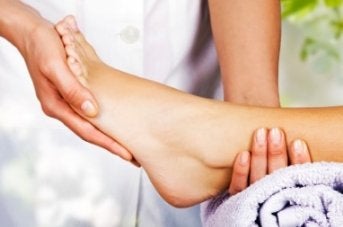 According to a study, the gene known as CARD9 is heavily related to fungal infections in the feet. Scientist Anne Puel states, “Our research showed that CARD9 deficiency is the genetic cause of dermatophytosis.” This means that patients were left unable to effectively fight fungi. Treatment of fungal infections typically includes antibiotics, healthy hygiene, creams, powders, and regularly changing your socks.
According to a study, the gene known as CARD9 is heavily related to fungal infections in the feet. Scientist Anne Puel states, “Our research showed that CARD9 deficiency is the genetic cause of dermatophytosis.” This means that patients were left unable to effectively fight fungi. Treatment of fungal infections typically includes antibiotics, healthy hygiene, creams, powders, and regularly changing your socks.
Athlete’s foot is an inconvenient condition that can be easily reduced with the proper treatment. If you have any concerns about your feet and ankles see Dr. Jon M. Sherman of Kentlands Foot & Ankle Center . Our doctor will treat your heel pain symptoms in addition to other podiatric-related needs.
Athlete’s Foot: The Sole Story
Athlete’s foot, also known as tinea pedis, can be an extremely contagious foot infection. It is commonly contracted in public changing areas and bathrooms, dormitory style living quarters, around locker rooms and public swimming pools, or anywhere your feet often come into contact with other people.
Solutions to Combat Athlete’s Foot
- Hydrate your feet by using lotion
- Exfoliate
- Buff off nails
- Use of anti-fungal products
- Examine your feet and visit your doctor if any suspicious blisters or cuts develop
Athlete’s foot can cause many irritating symptoms such as dry and flaking skin, itching, and redness. Some more severe symptoms can include bleeding and cracked skin, intense itching and burning and even pain when walking. In the worst cases, athlete’s foot can cause blistering as well. Speak to your podiatrist for a better understanding of the different causes of athlete’s foot, as well as helping you figure out which treatment options are best for you.
If you have any questions please feel free to contact our office located in Gaithersburg, MD . We offer the newest diagnostic and treatment technologies for all your foot and ankle needs.
Read more about athlete’s foot.


